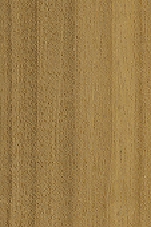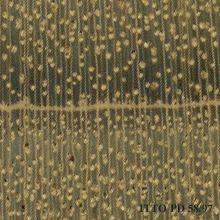
CHEMPAKA (Michelia champaca)
Trade Name
Chempaka
Scientific Name
Michelia champaca L.
Family
MAGNOLIACEAE
Common Names
Orange chempaka; Su (Vietnam); Champaka (Philippines); Sagah (Myanmar); Safan (Myanmar); Cempaka (Indonesia); Champa khao (Thailand); Cempaka kuning (Indonesia); Capaka (Indonesia); Champaka (Sabah); Chempaka (Malaysia); Chempaka merah (Malaysia); Champaca (Philippines); Mawk-sam-lung (Myanmar); Champa (Thailand); Champa pa (Thailand); Cham pa (Laos)
Scientific Name Synonyms
Talauma villosa fo. celebica Miq.; Sampacca velutina Kuntze; Sampacca suaveolens (Pers.) Kuntze; Michelia champaca var. pubinervia (Blume) Miq.; Michelia blumei Steud.; Magnolia membranacea P. Parm.; Magnolia champaca Baillon ex Pierre
Description Of The Tree
Botanical Description
It is a large evergreen tree, up to 30 m tall. The bole is straight, clean and cylindrical for 18 to 21 m, without buttresses.
Natural Habitat
This species is found scattered in primary lowland to montane rain forest, up to 2,100 m of altitude.
Plantations Available?
This species is now commonly cultivated throughout the tropics.
Wood Identification
Anatomic Description Of Wood
Wood diffuse porous. Occasionally tangential diameter of vessel lumina 100 micras or less. Vessels per mm2 5 to 20. Occasionally vessels per mm2 more than 20. Intervessel pits scalariform. Vessel-ray pits reticulate and/or foraminate. Multiple perforation plate Axial parenchyma in marginal or in seemingly marginal bands. 5 to 8 cells per parenchyma strand. Axial parenchyma in narrow bands on lines up to 3 cells wide. Axial parenchyma bands more than 3 cells wide. 4 to 10 rays per mm (medium). Oil and/or mucilage cells associated with the axial and/or ray parenchyma (idioblasts). Body ray cells procumbent with one row of upright and/or square marginal cells (Kribs-III). Fibers very thin walled. Fibers with distinctly bordered pits.
-
 Wood Macro Photo Radial Plane
Wood Macro Photo Radial Plane
-
 Wood Micro Photo Of Transversal Section
Wood Micro Photo Of Transversal Section
Availability
Cites Status
Unrestricted
General Wood Description
Odor
It has no taste or odor.
Color
The heartwood is olive-brown turning to dark brown with a greenish tinge upon exposure, clearly differentiated from the pale brown sapwood.
COLOR INDEX (1=Black, 7=Light yellow,white)
4
Grain
The grain is straight or slightly interlocked.
Texture
The texture varies from fine to moderately fine.
Luster
This wood is frequently low in luster.
Natural Durability
It is rated as a non durable to moderately durable wood. The heartwood is resistant against termites and the sapwood is resistant to Lyctus attack.
Natural durability index (1= Very high durability, 7=Vey low durability)
6
Resistance To Impregnation
The heartwood cannot be treated with preservatives.
Wood Physical Properties
Basic Density or Specific Gravity (O.D. weight/vol. green) (g/cm³)
0.49
Air-dry Density (Weight and volume at 12%MC) (g/cm³)
0.54
Total shrinkage Tangential (Saturated to 0%MC) (%)
5.2
Total shrinkage Radial (Saturated to 0%MC) (%)
3.2
Drying Defects
Drying Defects: Insect attack and cupping and bowing are the main sources of degrade.
Recommended Dry Kiln Schedule
JP-18
Dimensional stability ratio (Total Tangential Shrinkage %/Total Radial Shrinkage %)
1.6
Wood Chemical Properties
Wood Mechanical Properties
Bending Strength (MOR),12%MC (kgf/cm²)
688
Stiffness (MOE) 12%MC (kgf/cm²)
91812
Compression parallel to fiber 12%MC (kgf/cm²)
420
Shear strength radial 12%MC (kgf/cm²)
85
Janka hardness (side) 12%MC (kgf)
356
Workability
Sawing
Sawmilling of this species is reportedly easy.
Rotary Veneer Cutting
The timber peels and slices well.
Sliced Veneer
The timber peels and slices well.
Machining
Machining of this species is reported to be easy.
Turning
30
Nailing
It is easy to nail.
Gluing
It has a good behavior in gluing.
Finishing
It takes a good finish.
Substitute Species
It could possible substitute American white-wood (Liriodendron tulipifera)
REFERENCED USES
End Uses Summary
HOUSING GENERAL, flooring, panelling, FURNITURE AND CABINETS, cabinets, PLYWOOD AND VENEER, TURNING, PACKING, CONTAINERS, truck bodies, truck flooring, OTHER AND MUSICAL INSTRUMENTS, handicrafts, cementboard
General Housing
- 10 - Silica in Timbers
Flooring
- 14 - Handbook of Hardwoods
Paneling
- 18 - W3TROPICOS Missouri Botanical Garden
Furniture Cabinets
- 21 - Tropical timbers of the world. Part III-Southeast Asian and Oceanian Species.
Cabinet
- 24 - Empire Timbers
Panels, Veneers
- 25 - Directory of Timber Trade Malaysia
Turning
- 30 - Embassy of Honduras in Japan
Packing
- 45 - Recopilación y Análisis de Estudios Tecnológicos de Maderas Peruanas
Truck Body
- 53 - Timbers of the New World
Truck Flooring
- 54 - Bulletin of the Government Forest Experiment Station N.157: Identification of Tropical Woods
Handcraft
- 66 - Maderas latinoamericanas. VII. Caracteristicas anatomicas. propiedades fisicomecanicas, de secado, y tratabilidad de la madera juvenil de Cordia alliodora (Ruiz & Pav. Oken.)
Cementboard
- 81 - Madeiras da Amazônia: descrição do lenho de 40 espécies ocorrentes na Floresta Nacional do Tapajós
Please Provide Information To View Producer Information